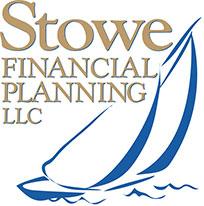REAL Return is what Really Matters
Which is a better total return, 6.6% or 5.5%? Right off you get the sense that adding ‘total’ to return is one of those financial planner weasel words. You would be right.
Total return is also called nominal return. It is the return that you Fox News zombies see reported every hour of every day. Nominal return isn’t the whole story. Since the point of investing, the whole point, is to beat inflation, the metric that matters is ‘real’ return. This is the nominal return reduced by the level of inflation. Nobody on TV talks about real return, so we can safely turn it off and never miss a thing. Except the playoffs, any playoffs. That would be terrible. Better leave it on.
Let’s revisit our example returns. In 1978 the total return of the S&P 500 was 6.6% according to the 2016 Dimensional Data Book. Real return was -2.2%. In 2007 the total return was 5.5%, real return was 1.4%. The lower return produced a better real return because inflation in 2007 was much lower than it was in 1978.
This is important. Real return is like relative speed on the highway. If you are doing a brisk 55 mph and traffic is moving at 65 you feel like you are sitting still. Conversely, try rolling through the next school zone at 30. Both are 10 mph in relative speed difference, and the difference is all that matters. Real return means you are beating inflation, hopefully by enough to support your withdrawal plan. That is why it is important.
When an analyst commits the sin of forecasting total return, he is putting together not one but two estimates, one for inflation and one for real productive growth. He’s bound to get one wrong. So lets give it a whirl.
I recently heard a presentation by Jeremy Siegel, famous author of Stocks for the Long Run which made me think about this. His forecast for real return for the next 3 to 5 years is a little over 5% based on current price earnings ratios and the distortions he sees in them. 5% may sound good or puny to you, but it’s a solid mid pack return. Not a boom and definitely not a bust.
To get to a total return forecast, all you do is add the real return estimate to your inflation estimate. This is also important. It doesn’t matter what you think inflation is because actual total return will reflect the addition of inflation. Notice also that I did not provide an inflation estimate. My forecast of inflation is no better than anyone else’s, which is to say, useless.
If you get a return on your stock investment of maybe 7 or 8% over the next 3 to 5 years that would be in line with historical inflation and meet your plan’s withdrawal or growth expectations, if not exactly your own.
All of this leads to the inescapable conclusion that chasing performance is immaterial to financial planning and certainly not good investment management. Managing your relative speed is the critical success factor, just like driving a car.

